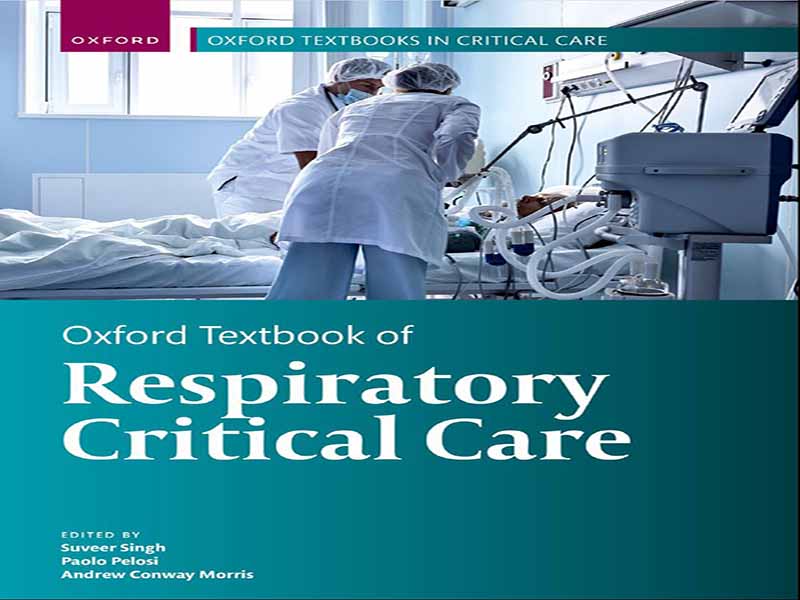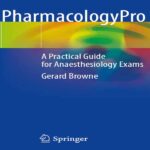- عنوان کتاب: OXFORD TEXTBOOK OF Respiratory Critical Care
- نویسنده: Suveer Singh
- حوزه: مراقبت های تنفسی
- سال انتشار: 2023
- تعداد صفحه: 1488
- زبان اصلی: انگلیسی
- نوع فایل: pdf
- حجم فایل: 56.3 مگابایت
مراقبتهای حیاتی تنفسی عنصر مرکزی پزشکی مراقبتهای ویژه مدرن را تشکیل میدهد و نیازمند دانش کاری آناتومی، فیزیولوژی و زیستشناسی تنفسی برای ارائه حمایت مؤثر از ریههای بیمار بدحال است. این بیماری از منشأ خود در اپیدمی فلج اطفال در دهه 1950 تکامل یافته است، جایی که پشتیبانی تهویه مکانیکی با فشار مثبت منجر به مزایای بقای قابل توجهی نسبت به استراتژیهای فشار منفی شد. در حال حاضر این رشته به طور دقیق مورد مطالعه قرار گرفته است که دانش علمی فزاینده در مورد شرایط خاص ریه، مبنای پاتوفیزیولوژیکی آنها و استراتژی های مدیریت مبتنی بر شواهد دارد.
درک بهتر از اساس مولکولی و فیزیولوژیکی شرایط با توسعه استراتژیهای درمانی جدید (مانند تهویه غیرتهاجمی) و درک بیشتر از تعادل ریسک و فایده مداخلات همراه شده است. این پیشرفت ها منجر به استانداردسازی مراقبت و در بسیاری از موقعیت ها نتایج بهتر برای بیماران شده است.
مراقبتهای حیاتی تنفسی مدرن مستلزم آگاهی از پیچیدگی اندامهای سیستمیک ریه و فعل و انفعالات همراه در بیمار بدحال، و همچنین درک آسیبشناسی اولیه ریه، تشخیص، مسیر حرکت و درمان است. علاوه بر این، مراقبت های حیاتی تنفسی واقعاً چند رشته ای است. بنابراین، پزشک مراقبت های ویژه نیاز به مهارت هایی دارد که از مراقبت های ویژه، بیهوشی، پزشکی تنفسی، بیماری های عفونی، قلب و عروق، نفرولوژی، رادیولوژی، آسیب شناسی و سایر رشته ها گرفته شده است. مراقبت های ویژه تنفسی عالی، کار نزدیک با متخصصان رشته های مختلف را ایجاب می کند.
کتاب درسی مراقبتهای حیاتی تنفسی آکسفورد، جوهر یک پایگاه دانش و مهارتهای مشترکی را که برای مدیریت بیماران بدحال مبتلا به بیماریهای ریوی و/یا نارسایی تنفسی مورد نیاز است، شناسایی میکند. کارشناسان برجسته از سراسر جهان فصل هایی را برای ارائه یک نمای کلی جهانی از این تخصص ارائه کرده اند. هر فصل از این کتاب پیشرفتها در زمینههای مربوطه را برجسته میکند، اما همچنین بر اهمیت درست کردن اصول اولیه تأکید میکند. به این ترتیب، چارچوبی برای توسعه توجه دقیق به جزئیات که زیربنای عملکرد بالینی مراقبت های حیاتی تنفسی است، فراهم می کند.
این متن خواننده را با دانش دقیق، مبتنی بر شواهد و به روز از عملکرد بالینی برای سیستم تنفسی، بیماریهای ریوی در پزشکی مراقبتهای ویژه و تأثیر بیماریهای بحرانی بر بیولوژی ریه مجهز میکند. هر فصل پیامهای کلیدی، بحثها و نکات تحقیقاتی بیشتر را به عنوان مکمل متن معتبر و مراجع کلیدی ارائه میدهد.
10 بخش شامل (1) مفاهیم اساسی و تاریخی ریه در بیماری بحرانی است. (2) جنبه های سازمانی مراقبت های ویژه و برنامه ریزی اضطراری؛ (3) عمل تهویه غیر تهاجمی، یک پیشرفت بزرگ در بیماری های تنفسی در 30 سال گذشته. (4) اساس تهویه مکانیکی تهاجمی؛ (5) نظارت و بررسی بیمار تنفسی بدحال. (6) مدیریت راه هوایی و پشتیبانی تنفسی پیشرفته برای نارسایی تنفسی. (7) مدیریت بالین بیمار تهویه شده؛ (8) عفونت های تنفسی در بیماری های بحرانی. (9) بیماری های شایع و نادر ریوی مرتبط با بیماری بحرانی؛ و (10) از شیر گرفتن و تهویه طولانی مدت.
هر یک از 65 فصل، گزینه های نکات کلیدی تمرین و مرجع دقیق را به خواننده ارائه می دهد، در حالی که منبعی آماده برای تحویل آموزشی، کمک هزینه یا نوشتن مقاله ارائه می دهد.
به این ترتیب، باید به عنوان یک مرجع مدیریت بالینی مستقل مبتنی بر شواهد و به عنوان یک ابزار آموزشی برای مشاوران، کارآموزان تحصیلات تکمیلی، کارکنان بالینی دانشگاهی، پرستاران، متخصصان بهداشتی وابسته و دانشجویان مفید باشد.
این کتاب برای خوانندگان جهانی جذاب خواهد بود، در حالی که نکات عمل بالینی را برای بیماری های تنفسی که خارج از حوزه عمل معمول آنها و برای تظاهرات کمتر شایع بیماری تنفسی ارائه می شود، ارائه می دهد. فصلی که به COVID-19 اختصاص دارد، و همچنین فصل های فردی به روز، به تأثیر این ویروس جدید در مناطق خاص مراقبت های حیاتی تنفسی اشاره می کند.
Respiratory critical care forms the central element of modern critical care medicine and demands a working knowledge of respiratory anatomy, physiology, and biology to provide effective support to the critically sick lungs. It has evolved from its origins in the polio epidemic of the 1950s, where positive-pressure mechanical ventilatory support led to substantial survival benefit over negative pressure strategies. It is now a rigorously studied discipline with increasing scientific knowledge of specific lung conditions, their pathophysiological basis, and evidence-based management strategies.
A better understanding of the molecular and physiological basis of conditions has been paralleled by the development of new therapeutic strategies (e.g. non-invasive ventilation) and greater understanding of the risk:benefit balance of interventions. These developments have led to standardization of care and, in many situations, better outcomes for patients.
Modern respiratory critical care requires knowledge of the complexity of lung-systemic organ and comorbid interactions in the critically ill patient, as well as an understanding of specific primary lung pathology, diagnosis, trajectories, and treatments. Further, respiratory critical care is truly multi-disciplinary. Thus, the critical care clinician requires skills taken from intensive care, anaesthesia, respiratory medicine, infectious diseases, cardiology, nephrology, radiology, pathology, and other disciplines. Excellent respiratory critical care dictates close working with specialists from multiple disciplines.
The Oxford Textbook of Respiratory Critical Care recognizes the essence of a common knowledge base and skills that are required for the management of critically ill patients with lung diseases and/or respiratory failure. Leading experts from across the world have contributed chapters to provide a comprehensive global overview of the specialty. Each chapter of this book highlights advances in the respective areas but also emphasizes the importance of getting the basics right. In this way, it will provide a framework for developing the meticulous attention to detail that underlies the clinical practice of respiratory critical care.
This text will equip the reader with detailed, evidence-based, up-to-date knowledge of clinical practice for the respiratory system, lung diseases within critical care medicine, and the impact of critical illness on lung biology. Each chapter offers key messages, controversies, and further research points as adjuncts to the authoritative text and key references.
The 10 sections cover (1) basic and historical concepts of the lung in critical illness; (2) organizational aspects of critical care and emergency planning; (3) practice of non-invasive ventilation, a major advance in respiratory disease over the last 30 years; (4) basis of invasive mechanical ventilation; (5) monitoring and investigation of the critically ill respiratory patient; (6) airway management and advanced respiratory support for respiratory failure; (7) bedside management of the ventilated patient; (8) respiratory infections in critical illness; (9) common and rare lung diseases associated with critical illness; and (10) weaning and long-term ventilation.
Each of the 65 chapters offers the reader options of key practice points and detailed reference, while providing a ready resource for educational delivery, grant, or paper writing.
As such, it should be useful as a stand-alone evidence-based clinical management reference and as an educational tool for consultants, postgraduate trainees, academic clinical staff, nurses, allied health professionals, and students.
The book will appeal to a global readership, while providing clinical practice points for respiratory disease presenting outside their usual sphere of practice and for less common respiratory disease manifestations. A chapter dedicated to COVID-19, as well as up-to-date individual chapters, makes reference to the impact of this novel virus in specific areas of respiratory critical care.
این کتاب را میتوانید از لینک زیر بصورت رایگان دانلود کنید:




































نظرات کاربران